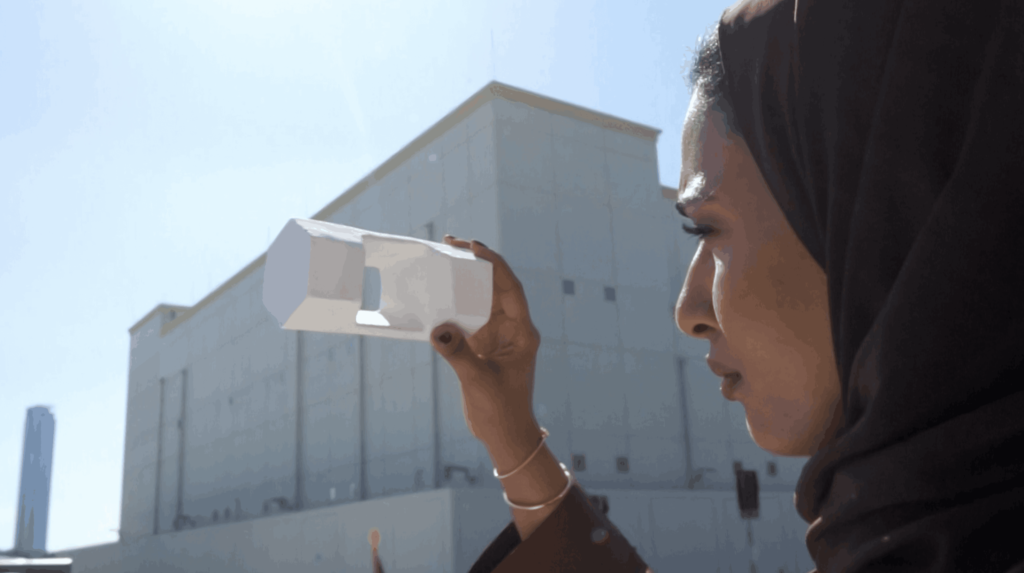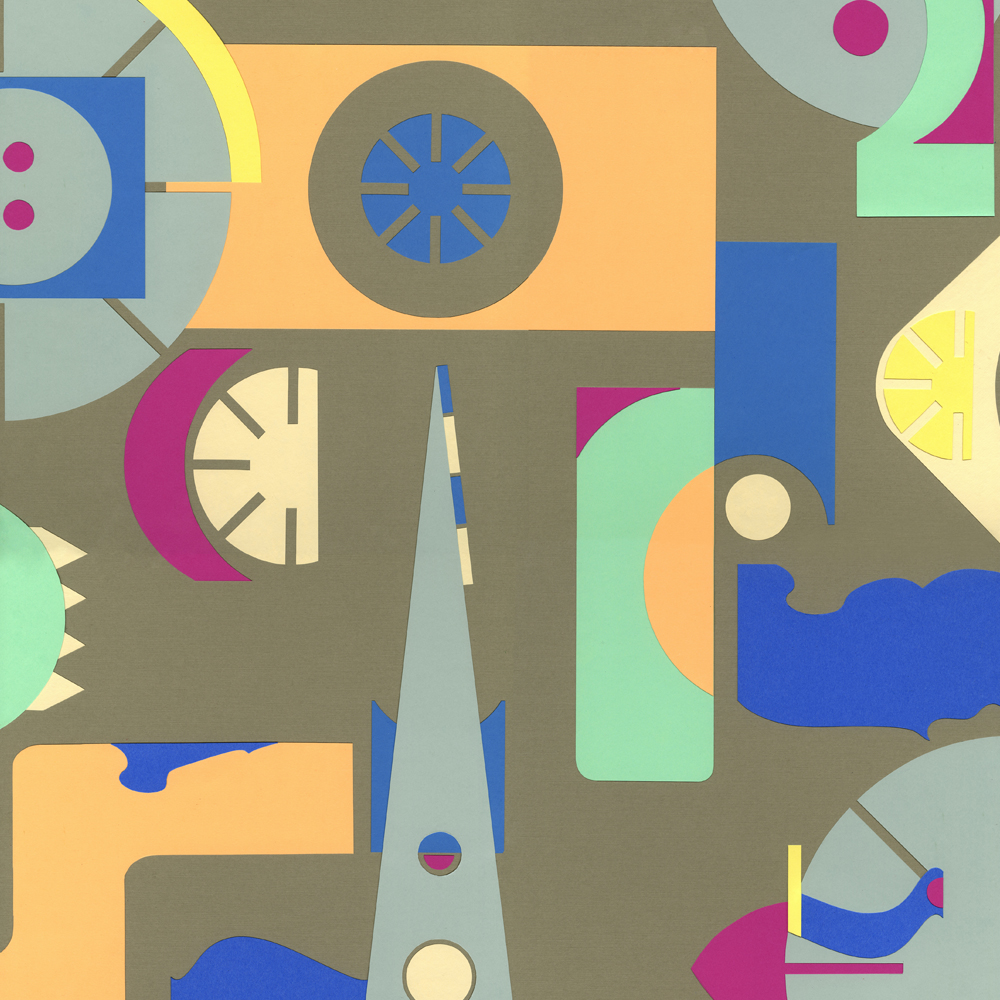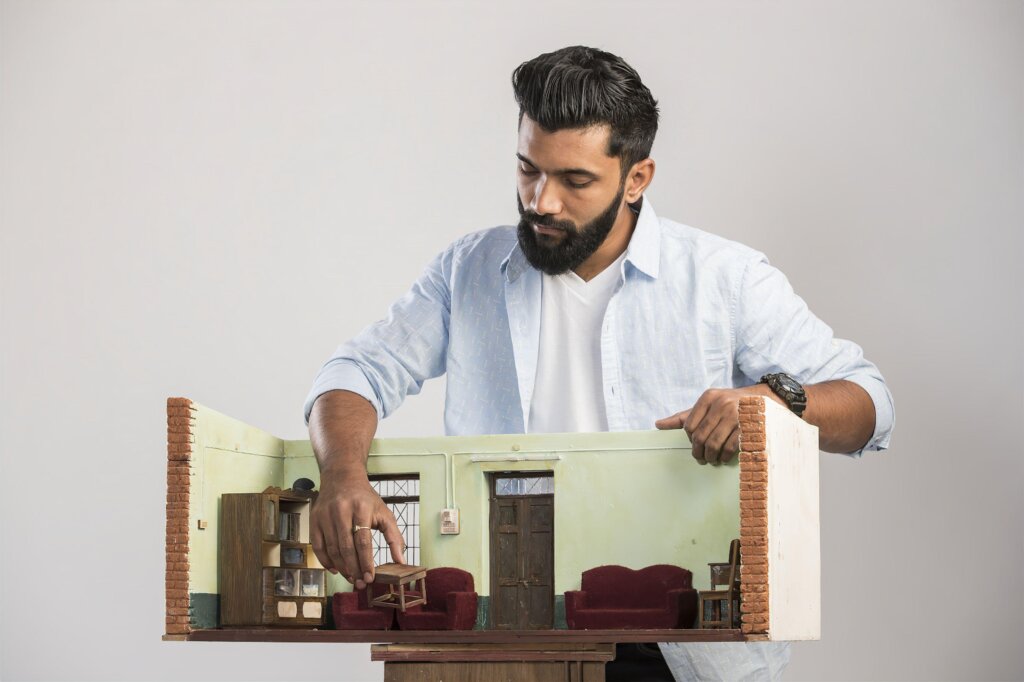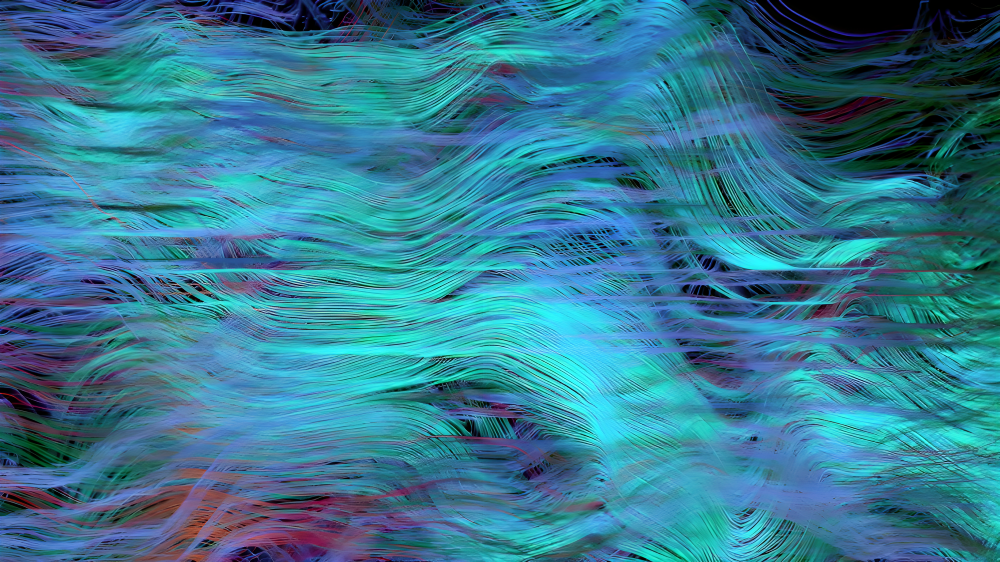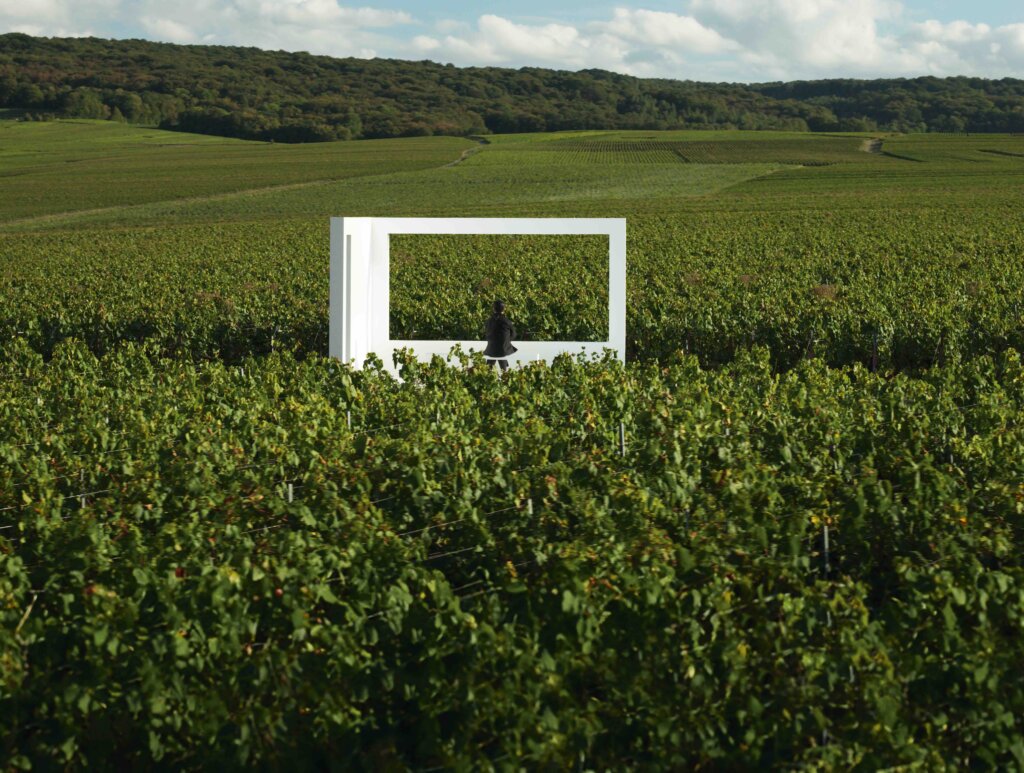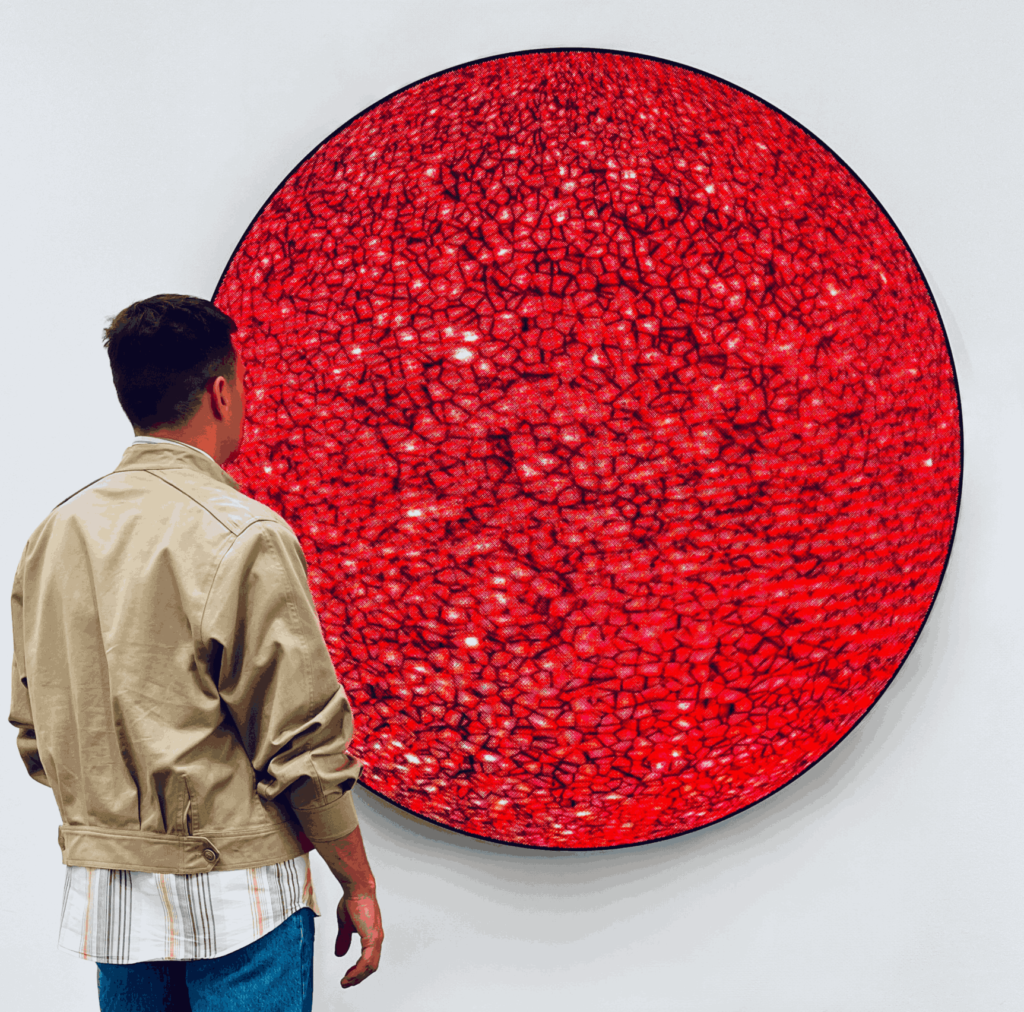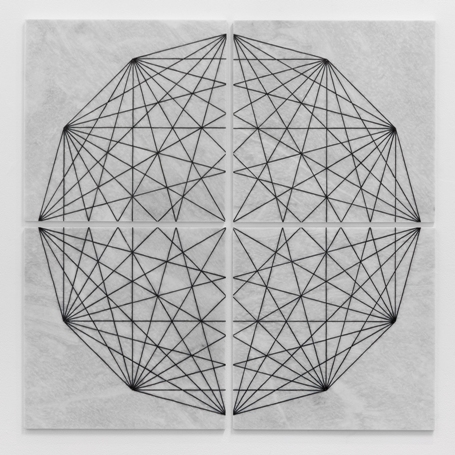
The A.R.M. Holding Art Collection’s ultimate aim is to leverage the universal language of art to stimulate innovation and create a brand that pioneers the importance of cultural expression and community. “Reflecting our brand identity and values, A.R.M. Holding Art Collection is a testament to our commitment to cultivating a human-centric, quality-driven and future-thinking culture. Art is unifying, universal and unequivocally curious. Where there is curiosity there is innovation, where there is innovation there is progress,” said Mohammad Saeed Al Shehhi, CEO of A.R.M. Holding.
The Collection brings together works across a diverse variety of mediums by Middle Eastern and international artists from established and emerging capitals. Its geographical breadth functions as a map of global urbanism, offering perspectives from artists working in studios from Ras Al Khaimah to Lima, to Kolkata, among many others. The Collection’s central theme, ‘Constructing Identities’, examines the role that art plays in reflecting on the concept of self, as well as the role that architecture plays in defining and building communities. While each artwork in the collection is entirely unique, thematic threads of memory, materiality, and urbanism weave together to present a coherent expression of community and humanity.
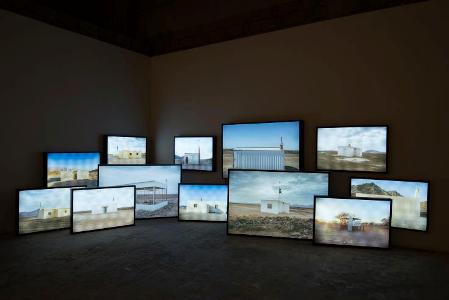
Moath Alofi, The Last Tashahhud, 2014-ongoing series, Framed Photographs, Dimensions variable
Memory, time, and story-telling are concepts that are central to the collection. In Lamya Gargash’s (UAE,1982) Drapes, Amr El Kafrawy’s (Egypt, 1980) diptych, Tammam Azzam’s (Syria, 1980) collage and Moath Alofi’s (Saudi Arabia, 1984) ongoing series titled The Last Tashahhud, there is a distinct feeling of remnants, traces and moments that have been preserved in time. The structures depicted in these works evoke a sense of mystery and intrigue, inviting the viewer to unearth the stories tied to these sites. Upon viewing and spending time with the works, one realizes that these buildings are more than mere remnants of a bygone era; they are cultural memorials rooted in enduring memories.
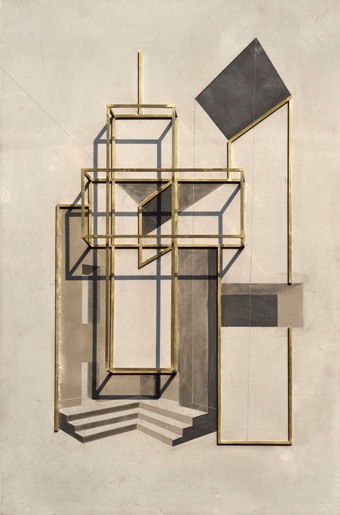
Rathin Barman, Untitled III (III), 2019, GFRC board, brass, graphite and charcoal, 121.9 x 76.2 x 12.7 cm
In keeping with A.R.M. Holding’s identity and commitment to building communities, the Collection holds a distinct appreciation for the qualities of materials that are inherent to construction and architecture. From the marble elements of Hamra Abbas’ (Kuwait, 1976) Construction Drawing 1, to the grout, wood, and glass paneling in Ishamel Randall Weeks’ (Peru, 1976) Cooperativa, considered alongside the concrete and metallic elements in Rathin Barman’s (India, 1981) Untitled III and the tarpaulin that Kristoffer Ardeña (Philippines, 1976) uses as the base layer of his Ghost Painting:Cracked Category painting, the use of everyday source materials is a direct reference to construction, sustainability, regeneration and a celebratory return to the earth. Ultimately, through the deliberate and purposeful use of raw materials, the Collection reflects on how anthropological innovation has emerged from the most natural of environments.
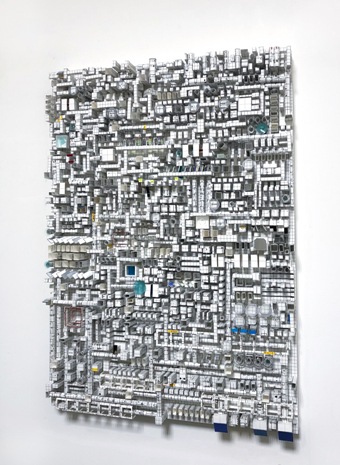
Katsumi Hayakawa, M-01A2, 2021, Mix media / Mixta, 60.50h x 43w cm
Geometry and the relationship between form and spatial aesthetics are also central themes in the Collection. As the viewer slowly moves through the artworks, simple geometric lines transform into building silhouettes, urban plans and architectural elements, emphasizing the minimalistic and linear aspect of constructed environments. Timo Nasseri’s (Iran/Germany, 1972) I saw a broken labyrinth #14, invites the viewer into a world of strictly linear form, where the negative space allows the viewer to create and construct temporary spaces that disappear as quickly as they are formed.
Contrastingly, Mouttea Murad’s (Syria, 1977) Magical Carpet depicts a colorful spectrum of abstract shapes where vivid landscapes emerge and fall away, as if flying over blueprints of urban cities. This feeling of observing landscapes from above is also present in Katsumi Hayakawa’s (Japan, 1970) M-01A2, an immersive wall sculpture that resembles meticulous city-scapes, which, upon closer examination, are merely coiled pieces of plastic and paper. This push and pull between the physical line and the undefined, the built form and the temporary, allows the viewer to take on the guise of the architect, with each artwork emanating a sense of boundless possibilities the longer one spends with the works.
A.R.M. Holding’s Collection aims to enhance potential and push boundaries on both a physical and conceptual level. Indeed, ‘Constructing Identities’ acts as a metaphor for the Collection’s ambition – to be a unique platform and a foundation for activating meaningful conversation, a chance to take part in cultural life within a stimulating environment, a prospect to sharpen critical faculties through innovative practices, and an opportunity to promote notions of community, sustainability and innovation for the greater common good.
For more information on the collection, visit the A.R.M. Holding website here.




